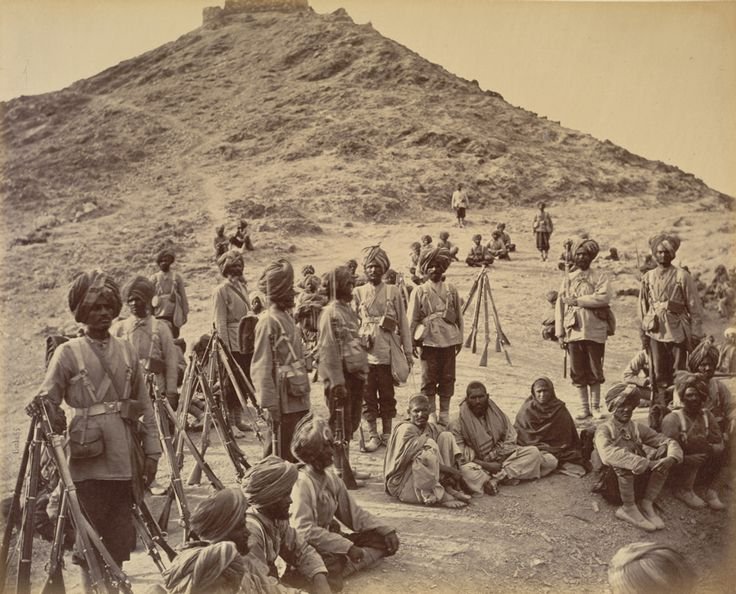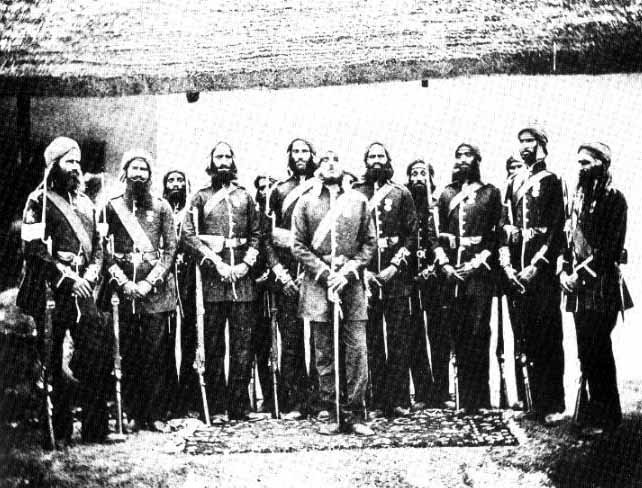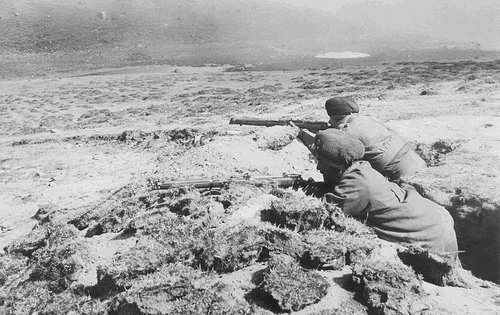September 9 , 2015: Recently the British Army contemplated raising a Sikh Regiment as part of its standing army. While the move ultimately failed, we kinda understand why they would want a Sikh regiment. One of the most decorated units in the Indian Army and at one point the most decorated unit in the British Indian Army, the Sikh Regiment's tales of bravery are legend. Much like the Ghorkas, the Sikh Regiment has an elevated status that is richly deserved. Read on to find out why.
The beginning of the Sikh Regiment
The proposal to raise a Sikh Regiment was raised just before the beginnings of the Sikh War. During the war, or so the story goes, the British were so impressed by the valour and sheer courage of the Sikh fighters, that they wasted no time in raising their own battalion of Sikh warriors.
The Second Afghan War
While the Sikh Regiment was called to action during the 1857 revolts, their first deployment really came during the the Second Afghan War.

Source: Pinterest
The legendary battle of Saragarhi
Now this, this a battle where the Sikh Regiment truly cemented its reputation as one of the bravest regiments in the country, if not the world. To say that this battle is made of the stuff of legends would be a disservice to the 22 soldiers who laid down their lives in the defense of Saragarhi. This day is now celebrated annually as Regimental Battle Honor Day.

Source: Wikipedia
World War 1: The battle of La Bassee
German and Franco-British forces were engaged in a fierce battle in La Bassee, north France. During the battle, the 47th Sikhs were part of a coordinated attack on the German fortifications. The attack was eventually cancelled, but two companies of the Sikhs never received the order and marched on the Germans themselves. During the attack the Sikhs lost 221 of their 289 soldiers but managed to severely cripple the Germans' attacking capabilities.

Source: DailyMail
World War 2
The Sikh Regiment contributed to a major part of the British war effort, especially in the Asian theatre. Together with the rest of the Indian army, the Sikh Regiment ensured that the Japanese advance didn't proceed beyond the Indian borders.

Source: Wikipedia
India-China War 1962
The war with the Chinese in 1962 isn't one of the greatest chapters in the Indian Army's history, or in India's in general. Whether it was the bureaucracy tying down the armed forces or the usage of wrong tactics, it was a chastening experience for the country. But even in this dark episode, the Sikh Regiment managed to shine like a beacon of light. Tales of the bravery of Subedar Joginder Singh, Captain Haripal Kaushik and Sepoy Kewal Singh are still recounted even today.

Source: IsraelMilitary
India-Pakistan War, 1965
But the war against Pakistan just 3 years later, was another story. The Indian Army managed to cut into the heart of Pakistani territory reaching the outskirts Lahore, and of course, the Sikh Regiment was the tip of the sword that was the army.

Source: IndianDefenceReview
India-Pakistan War, 1971
While the primary conflict zone of the 1971 war was around East Pakistan (present day Bangladesh), the Indian Army opened another front on the western border to keep Pakistan occupied. This was where our legendary Sikh Regiments took the fight to enemy, ensuring that Bangladesh managed to attain independence.

Source: Wikipedia
The Kargil War
During the battle for Tiger Hill, it was the 8th Sikh Regiment, along with the 18th Grenadiers and the 2nd Naga, that were chosen to lead India's push to reclaim what was ours. In a tense 36 hour operation, it was the three Indian regiments that persevered.

Source: MindGoCrazy

